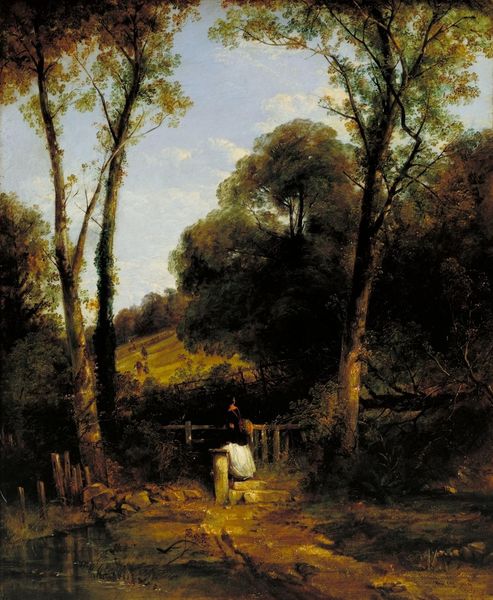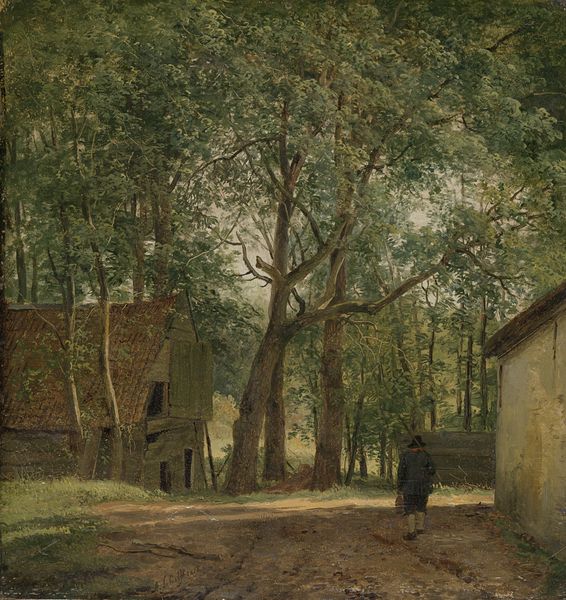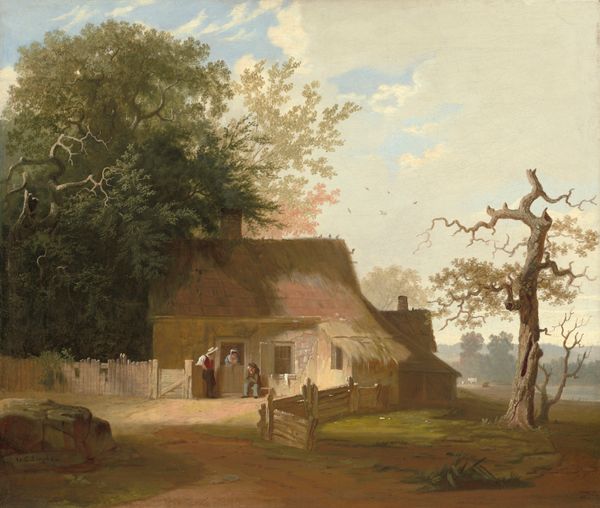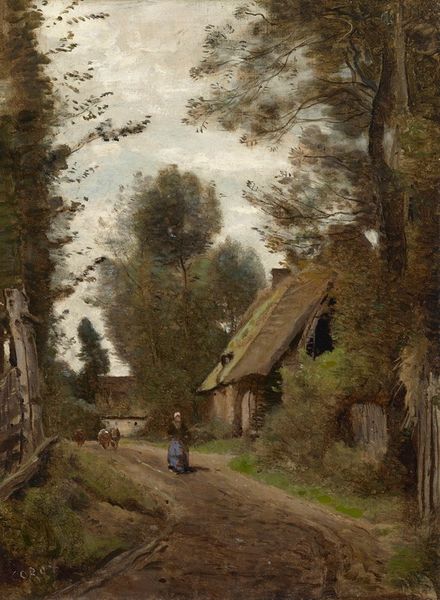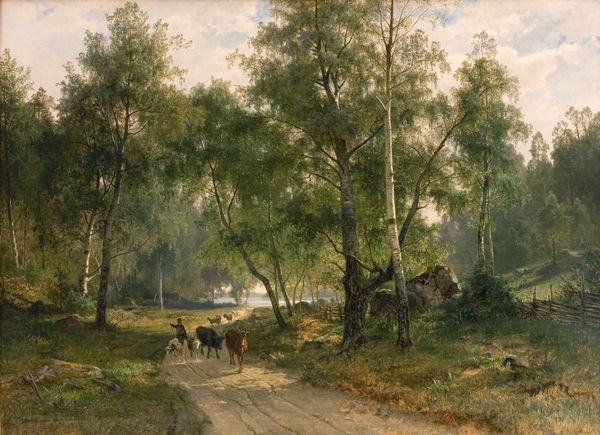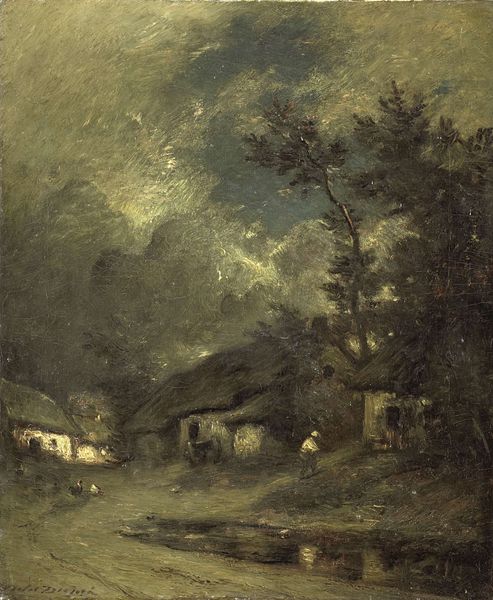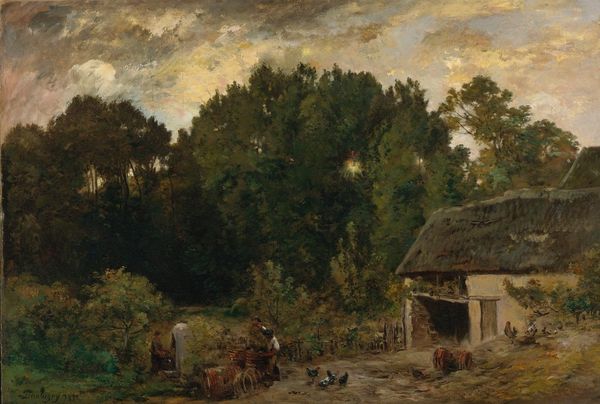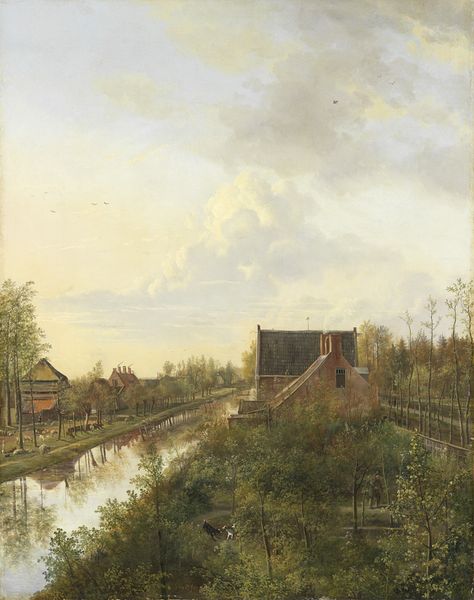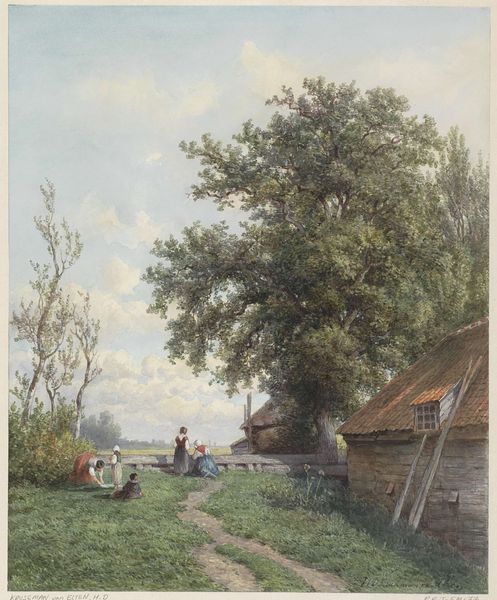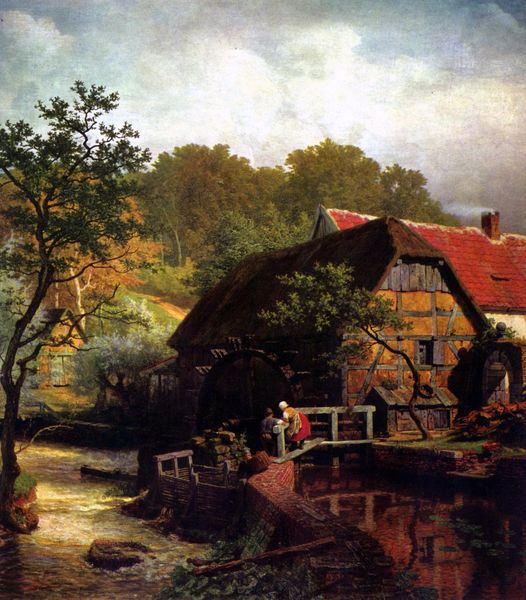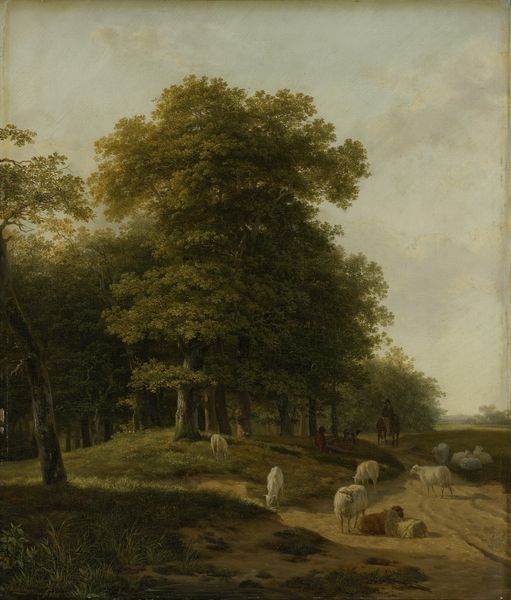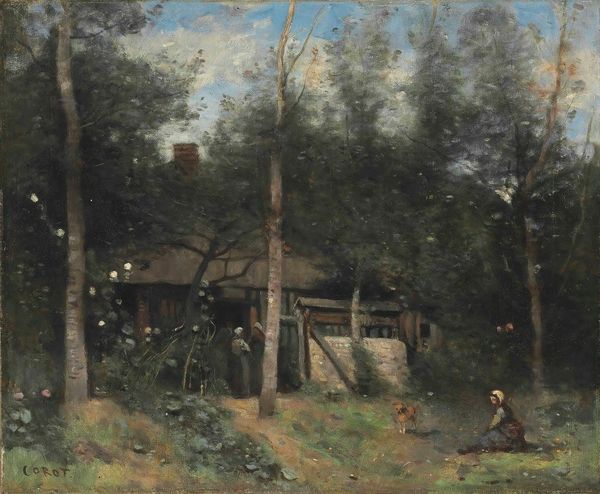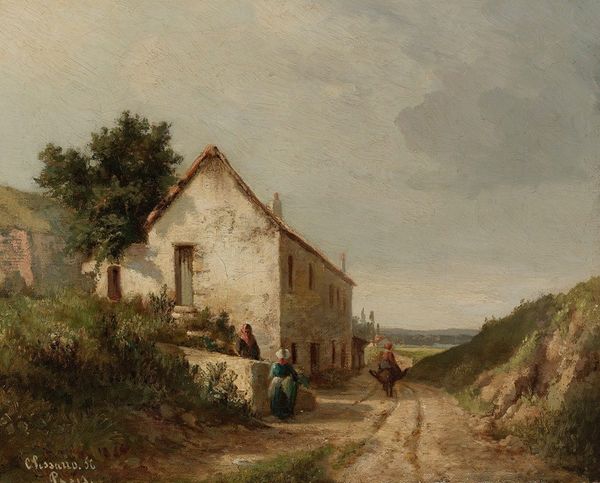
painting, oil-paint
#
painting
#
oil-paint
#
landscape
#
oil painting
#
genre-painting
#
realism
Dimensions: height 86.5 cm, width 61.5 cm
Copyright: Rijks Museum: Open Domain
Editor: So here we have Gerard Bilders' oil painting "Jacob van Ruisdael Sketching a Watermill", painted in 1864. The mood strikes me as one of staged naturalism, almost like a theater set. What's your take? Curator: I agree that the "naturalism" appears carefully constructed. Bilders isn’t simply representing the landscape, but performing a specific understanding of Dutch Golden Age painting, particularly referencing Ruisdael. Consider how museums, galleries, and the art market itself shaped what was considered 'authentic' Dutch identity in the 19th century. This painting becomes a commentary on art history itself, posing the question of how do we view artists from the past, and what role should those past artists play in shaping national pride in the present? Editor: So you're saying it's less about the landscape and more about a performance of Dutch artistic heritage? How is that evident in the painting? Curator: Look at the figure of Ruisdael himself. Is he deeply engaged in nature, or posing for us? How does that posture feed into then-contemporary views about artists, their relationship to nature, and ideas about how Dutch art should develop? Furthermore, we should be thinking about how images shape reality. Genre painting like this romanticized a certain rural simplicity, perhaps distracting from industrialization impacting the Netherlands. Editor: That makes me think about who would've been the target audience for a piece like this. Was it trying to remind a particular class of the population of a past that maybe never actually existed as they imagined? Curator: Precisely. This image reflects a cultivated nostalgia that benefitted certain segments of society more than others. The idealized image of Dutch heritage reinforces a particular kind of national identity. Editor: That's really interesting, I didn't initially pick up on any of those political implications, but it changes how I view the image entirely. Curator: Art, like history, is never neutral. Paintings like these invite us to question who gets to define "national identity," and what purposes such definitions serve.
Comments
rijksmuseum about 2 years ago
⋮
This painting was part of a ‘historical gallery’, a collection of paintings and sculptures glorifying Dutch art. The landscape painter Jacob van Ruisdael was one of the 17th-century artists to be honoured with a painting. He is shown here out-of-doors, in the act of sketching a watermill. Bilders was clearly more skilled in painting the landscape than in rendering the figure.
Join the conversation
Join millions of artists and users on Artera today and experience the ultimate creative platform.
